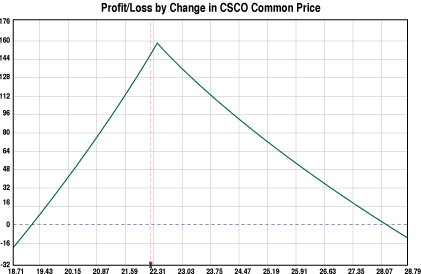OPTIONS
Is It Really Possible To Trade Nondirectionally?
Tweak Those Spreads
by Phillips Wiegand Jr.
Is it possible to trade in any environment? Here are the basics of the calendar spread and how it can be used to trade the more volatile securities.
It's no secret: Trying to gauge short-term market moves is a challenge. There have been too many times when it felt as though the major indices had hit a bottom. Nearly two dozen rallies since September 2000 have turned out to be bear traps. And each time traders have taken the bait, only to have the bottom fall out from under them as the broad market indices sliced through support levels. The glimmer of hope that keeps us in front of our monitors every day is the belief that the market will turn. Worse, although the market may seem to be turning around, who knows how long it will last? Do we want to keep banging our heads against the wall every day trying to take the long side and continue to be punished? Taking the short side can be just as frustrating and dangerous. How can traders take advantage of this seemingly endless cycle of no direction? It's simple: trade nondirectionally.
I'm not talking about straddles, ratio backspreads, and other combinations used to hedge risk. These strategies can be unattractive in periods during which the implied volatility in the overall options market is sitting at historically high levels. I'm talking about calendar spreads an effective strategy to use when the markets are directionless.

Figure 1: RISK PROFILE OF A NEUTRAL TRADE. The maxiumum profitability is at $22.50 and the trade will be profitable when the price of the underlying stays within the $19 and $28 range.
APPLYING IT
The calendar spread enables you to profit from a security that is trading within a specific range, and when implemented on the right stocks, has proven to be a lucrative strategy. The downside to this is that you cannot use them on the most volatile stocks (which can be the most fun to trade because they usually break out of the range). First, I'll discuss the basics of the calendar spread and then explain how it can be used to trade the more volatile securities.
A calendar spread strategy involves options that have the same strike price but different expiration months. They can be created with a bullish, bearish, or neutral bias, and the most you would be risking on the trade is the debit paid to establish the position. The longer-term option is purchased, and simultaneously the shorter-term one is sold. This way, time will eat away at the short option while the long option retains its value. Additional adjustments can be made to the position in order to increase its profitability.
The key to finding great calendar spreads is finding options with unusually high implied volatility in the front months and low to normal implied volatility in the back months. Suppose you identified the stock of Cisco Systems, Inc. [CSCO], as a candidate. Based on your forecast that the stock was going to remain in a trading range for the next couple of weeks, you purchased the October 22.5 put and sold the June 22.5 put for a debit of 1.5. The most you will risk on the trade is the net debit paid to establish the position. As long as CSCO stays in a trading range, the position will be profitable. The risk profile for this trade can be seen in Figure 1.
The solid blue line shows the different profit-loss scenarios at June expiration, and you can see that the maximum profitability is right at the $22.5 strike price. In addition, as long as the underlying stays within $19 and $28, the trade will be profitable.
...Continued in the October 2001 issue of Technical Analysis of STOCKS & COMMODITIES
Phillips Wiegand Jr. is a senior writer and trading strategist at Optionetics.com.
Excerpted from an article originally published in the October 2001 issue of Technical Analysis of STOCKS & COMMODITIES magazine. All rights reserved. © Copyright 2001, Technical Analysis, Inc.